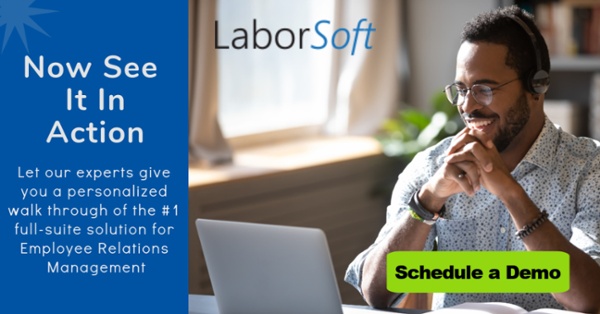
While the Family and Medical Leave Act (FMLA) was enacted back in 1993, millions of Americans became more familiar with it and exercised their right to activate it during the pandemic. The truth is that most of us were impacted by COVID in some way or another over the last year and a quarter, but FMLA proved to be a literal lifesaver for MANY [whether they were directly infected or indirectly affected if family members had it/were recovering over the long-term or were simply strapped with no childcare when district schools closed for long periods of time].
The reality is that there are different conditions under which an employee could be covered for extended PTO under the Americans with Disabilities Act [ADA] or FMLA in relation to COVID-19. In fact, a new contingent of “COVID-19 long haulers", or those who have lingering symptoms or manifestations of the virus for months afterwards, such as chronic fatigue, shortness of breath and brain fog, may be covered under both laws, whereas those who recover quickly [i.e. in under two weeks or less] may only be covered under FMLA protection, not the ADA. There is a complex set of rules set forth in these laws, but HR managers need to navigate their potential implications on employee relations.
ADA & FMLA: Confusing Coverage
While the ADA has generally been cut and dry about protecting those with disabilities— i.e. physical or mental impairments that substantially limit one or more major life activities—within a 15 or more-person company, the waters get murky when they concern an enigmatic illness like COVID-19, the understanding of which is constantly evolving. As scientists and medical researchers continued to be baffled over COVID’s long-term effects well over a year later, experts and attorneys in employment law are also confused and often polarized on the interpretation of both ADA & FMLA criteria.
David Fram, Director of ADA Services for the National Employment Law Institute in Colorado, opined about an employee having the illness for two weeks with no lingering effects as being regarded as ‘having a disability’. He then highlighted the ambiguity inherent in a situation like this because while an employer doesn't have to accommodate someone merely regarded as having a disability, it must refrain from discriminating against that person, but must not discriminate against or must reasonably accommodate an employee with a substantially limiting impairment, which may include COVID-19 long haulers.
This is where the verbiage of each law gets even more muddled because the FMLA, which is intended for employers of 50 or more employees within a 75-mile radius of the worksite, defines a serious health condition to be an illness, injury, impairment, or physical or mental condition that lasts for more than three calendar days and requires some level of inpatient care or an ongoing course of treatment [made up of two or more visits within up to 30 days from the onset]. Under these criteria and if the employee has been employed for 12 months and worked at least 1,250 hours in that period preceding the beginning of the leave, the employee would qualify.
Another consideration would be an illness or condition that is identified as chronic, meaning that the employee is considered temporarily incapacitated to perform the functions of his/her/their job, at least two times over the course of a year, and how that could qualify the employee to be eligible for intermittent FMLA leave. According to Leigh Jeter, a Chicago-based attorney at Michael Best & Friedrich LLP. Or, according to Robin Shea, a NC-based attorney at Constangy, Brooks, Smith & Prophete, a COVID long hauler could qualify for up to 12 weeks of unpaid leave over a 12-month period, or in some cases, more than 12 weeks all the way up to 6 months, depending on the company’s short-term disability policy.
Lori Armstrong Halber, an attorney with Fox Rothschild in Pennsylvania, echoes the confusion surrounding the interpretation of these two laws by insinuating that an employer would only have to provide a leave of absence or modified work schedule option [as mandated by the ADA], that is above and beyond the time-off clause guaranteed by the FMLA, if they proved that not doing so would constitute an undue hardship for the employee. In this case, Jeter identified that the removal of nonessential functions within a position’s job description might be enough of a reasonable accommodation, and Lindsay Burke, an attorney with Covington in Washington, D.C., pointed out that a remote work option may suffice too, depending on the specific circumstances.
Communicate for Clarity
Getting down to brass tacks, it is going to be a process of trial and error for HR managers when it comes to interpreting and applying ADA and FMLA rules in the return-to-work phase. However, consistency is critical and transparency yields trust. Here are some tips on preparing for employee questions regarding leaves of absence or accommodations when returning to work:
- Post FMLA rules and redistribute short-term and long-term disability policies upfront when employees return to work en masse.
- Reiterate to employees that issues of a sensitive nature like personal health and medical issues will be treated with the utmost level of confidentiality.
- Consult the ADA and engage in the interactive process when researching reasonable accommodations.
Arming yourself with this knowledge now could prove beneficial and go a long way with employees who may be nervous when re-entering the workplace.
LaborSoft’s innovative technology is one of many integral solutions that keep your business, in business. Our employee relations analytics, case management workflows, and our central repository of documentation streamlines case management to mitigate risk of operational bottlenecks, costly lawsuits, and legal ramifications stemming from HR issues and complaints. This sensitive data requires that maximum security protocols are in place and that your information is protected at all times. Contact us for a customized demonstration and learn how LaborSoft can help you improve communications, build a more collaborative, safe, and supportive workplace, while reducing the likelihood of costly litigation.
Build a more collaborative, safe, and supportive workplace, while reducing the likelihood of costly litigation. Contact LaborSoft for a customized demo.
